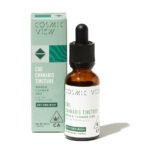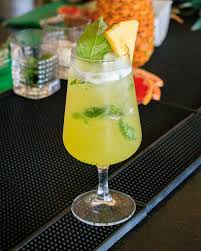Food photography looks easy at first glance—just snap a picture of a delicious meal and share it with the world, right? But anyone who has tried it knows the reality is quite different. For those of us working in this field, especially as a food and drink advertising photographer, the challenges run deeper than just lighting a plate or choosing a good angle. This craft demands skill, patience, and an understanding of both food and photography that many might not expect.
Why Food Photography Is More Than Just Taking Pictures
At its core, food and drink photography in the Southwest USA is about making food look as tempting as it tastes. This may sound simple, but the complexities begin as soon as the lens comes out. Food is alive—meaning it changes shape, color, and texture quickly. A juicy steak can dry out under hot lights, a salad wilts within minutes, and a glass of wine can quickly lose its sparkle. Capturing food at its best means battling against time and nature.
The Technical Hurdles That Professionals Face
- Lighting Challenges: Lighting is everything in food photography. Natural light is ideal for its soft and flattering effect, but it is also unpredictable. Artificial lights give control but risk making food look unappetizing if not set properly. Balancing shadows and highlights to enhance textures without creating harsh contrasts requires a refined eye.
- Styling the Food: Often overlooked, food styling is an art itself. A food and drink advertising photographer frequently collaborates with a stylist to arrange the dish perfectly. Every ingredient is placed deliberately to draw the eye, and sometimes the food is “enhanced” with non-edible tricks—like using glue to mimic syrup or steam machines to show hot dishes. This attention to detail makes the difference between an average photo and one that makes viewers crave the food.
- Managing Moisture and Freshness: Food photographers race against time to keep dishes looking fresh. For example, a burger might need constant spraying to keep the lettuce crisp or a fish dish might require the application of oil to maintain its shine. These tiny adjustments need constant attention.
- Capturing the Right Moment: The perfect shot often happens in a blink. The steam rising from a hot cup of coffee or the bubbles in a freshly poured soda are fleeting. A professional anticipates these moments and works swiftly to capture them before they disappear.
The Emotional Connection in Food Photography
Good food photography isn’t just technical; it’s emotional. A photograph of food can remind someone of family dinners, celebrations, or comfort during tough days. It needs to connect with viewers on a personal level and inspire feelings like hunger, warmth, or nostalgia.
Food and drink advertising photographers often think about this emotional side. Every project is more than just selling a meal—it’s about telling a story that resonates. When a photo makes someone smile or crave that food, it means the work has succeeded.
What Sets Professional Food Photographers Apart
The difference between casual food photos and professional ones comes down to a few key factors:
- Experience with Food Behavior: Professionals understand how different foods react under lights, cameras, and time. This knowledge allows them to anticipate challenges and solve problems quickly.
- Use of Specialized Equipment: Beyond just a camera, professionals use lenses that highlight texture, lighting tools that replicate natural conditions, and reflectors to balance shadows. Tripods and remote shutters help capture steady, perfectly timed shots.
- Patience and Flexibility: Food photography rarely goes as planned on the first try. Lighting conditions change, food doesn’t always cooperate, and sometimes creative ideas have to be adjusted on the spot. A professional photographer remains calm and adapts quickly.
- Collaboration Skills: Working with chefs, food stylists, and marketing teams means balancing different perspectives and ideas. Professionals know how to listen and communicate effectively to bring out the best in every shot.
Behind the Scenes: What Food Photographers Deal With Daily
Food photography may look glamorous on social media, but the behind-the-scenes reality is quite different. Here’s what a typical food shoot involves:
- Setting up lighting and equipment, which can take hours before the food even arrives.
- Coordinating with stylists to prepare the dish for the camera.
- Shooting multiple versions of the same dish to capture different angles and lighting.
- Constantly adjusting food to keep it fresh and visually appealing.
- Editing hundreds of photos to pick the best shots and fine-tune colors and details.
Each step requires focus, skill, and passion to ensure the final image tells the right story.
Outcome:
Food photography is a unique blend of art, science, and storytelling. A professional food and drink advertising photographer brings all of these elements together in every project. The challenges—like managing lighting, working with delicate food, and connecting emotionally with the audience—require more than just technical skills. They demand empathy, creativity, and the ability to adapt.
For anyone who enjoys food and the visual world, understanding these challenges can deepen appreciation for the images we see every day. Behind every mouthwatering photo is a story of hard work and passion that most people don’t notice—but that makes all the difference.
- The Challenges Of Food Photography: What Sets Professionals Apart
- For anyone who enjoys food and the visual world, understanding these challenges can deepen appreciation for the images we see every day. Behind every mouthwatering photo is a story of hard work and passion that most people don’t notice—but that makes all the difference.
- food and drink photography in the Southwest USA
Related posts:
 Discover Why Custom Greaseproof Paper Is Changing Food Packaging Forever
Discover Why Custom Greaseproof Paper Is Changing Food Packaging Forever
 How Custom Fast Food Boxes Are Making Packaging More Impactful Today
How Custom Fast Food Boxes Are Making Packaging More Impactful Today
 Custom CBD Oil Boxes: Why They’re Essential for Building Your Brand
Custom CBD Oil Boxes: Why They’re Essential for Building Your Brand
 Boost Your Business with Custom Printed Fish and Chip Paper Today
Boost Your Business with Custom Printed Fish and Chip Paper Today
 Discover the Benefits of Custom Heat Seal Paper for Your Business
Discover the Benefits of Custom Heat Seal Paper for Your Business
 Discover the Versatility and Visual Appeal of Custom Sleeve Box Packaging
Discover the Versatility and Visual Appeal of Custom Sleeve Box Packaging
 The best South Indian Sweets Online, we bring our heritage taste to your doorstep. Now delivering across India
The best South Indian Sweets Online, we bring our heritage taste to your doorstep. Now delivering across India
 Maximize Product Perception Using Premium Custom Glassine Paper
Maximize Product Perception Using Premium Custom Glassine Paper







